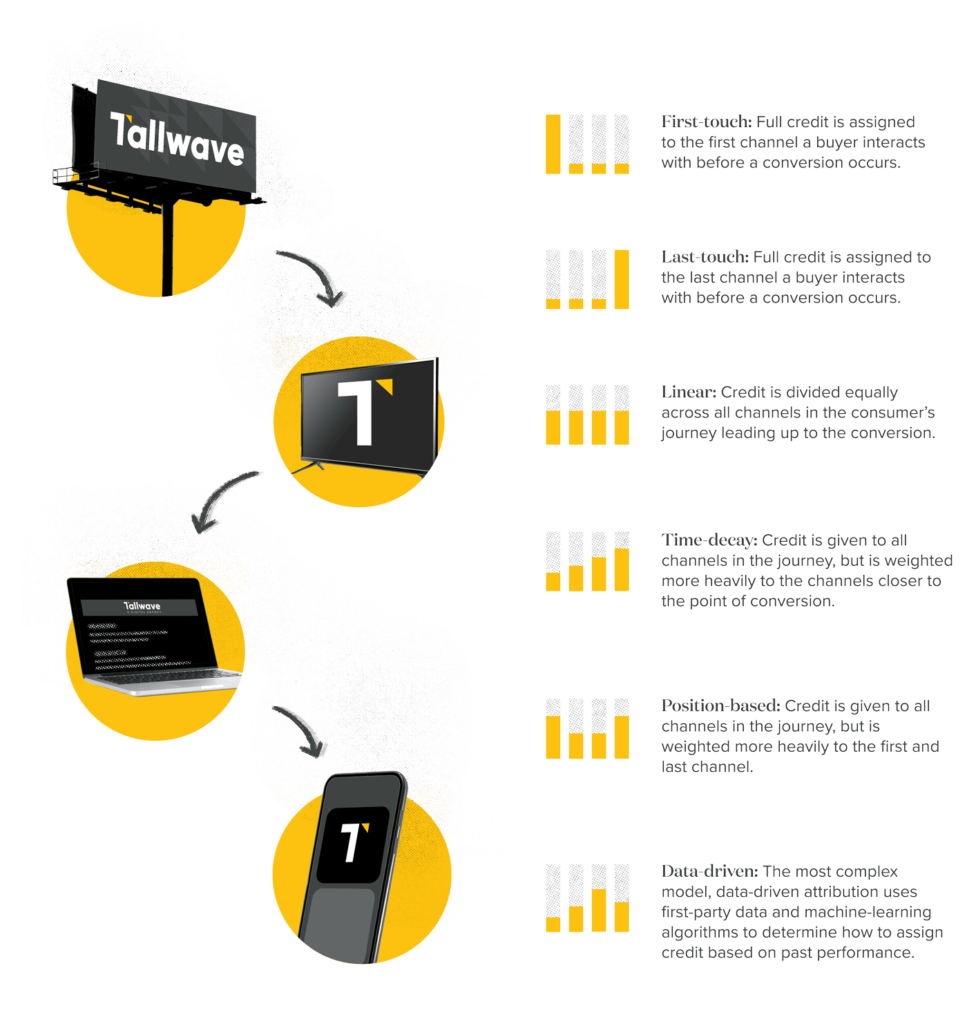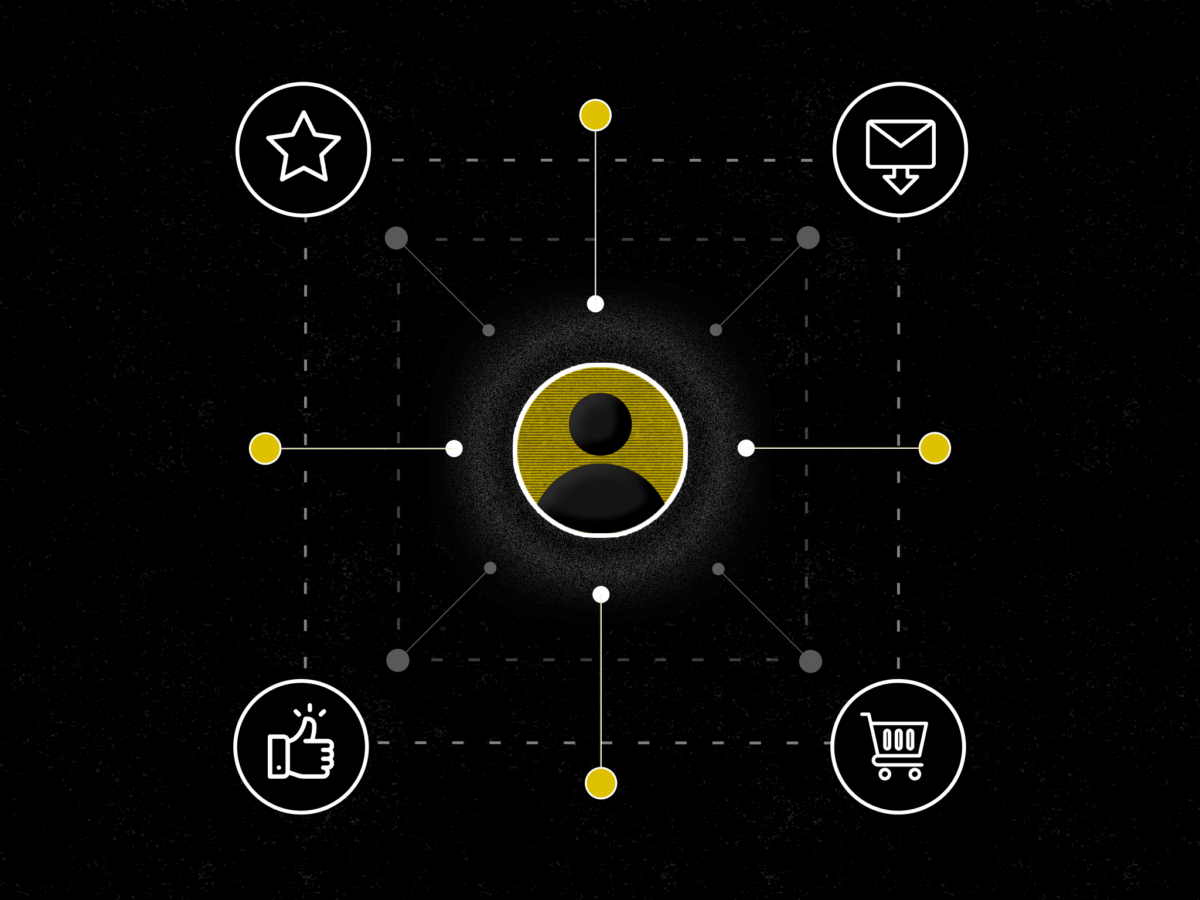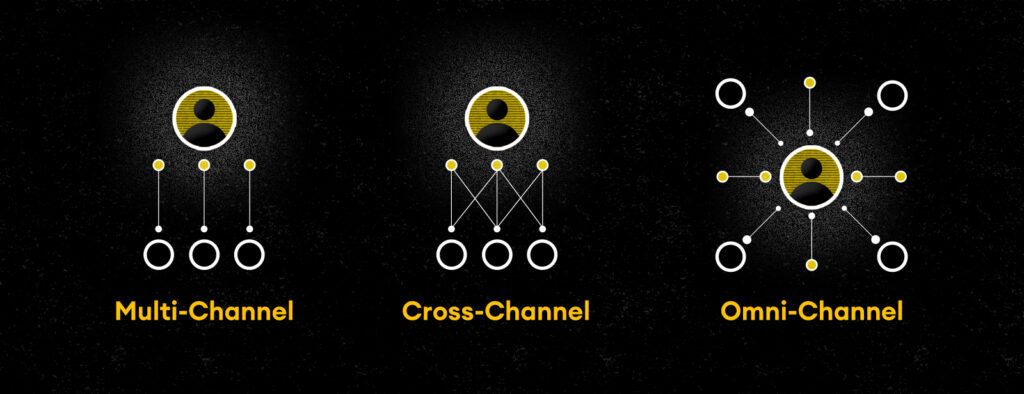This Halloween, the scariest thing lurking in your marketing strategy isn’t a werewolf or a ghoul—it’s your flawed attribution model. While you might not hear its eerie whispers, the wrong model could be silently leading you into a budget-wasting nightmare. Failing to track the full customer journey, misinterpreting data, and over-relying on outdated methods can turn your marketing into a horror story. But don’t be afraid—we’re here to shine a light on the spine-chilling mistakes you might be making with your marketing attribution and help you escape the darkness of misleading measurement.
What is a marketing attribution model?
The customer journey is a complex process. On average, it takes consumers seven interactions with a brand before they will make a purchase. Each of those interactions plays an important role in influencing your consumer: a billboard that makes a consumer aware of your brand, a TV ad that educates that consumer about your product, a display banner that takes them to your website for more information, a retargeting ad on Instagram that finally convinces them to make the purchase. But which of those channels should get credit for the conversion? Sure, the retargeting ad got them to put the product in their cart, but that ad couldn’t have been served to them if they hadn’t visited the website through the display banner. And they may not have clicked on the display banner if they’d never seen your brand on that billboard or TV ad.
A marketing attribution model analyzes those various touchpoints, or channels, in the customer journey and then assigns credit to those channels when a conversion occurs. There are many types of attribution models, and while there is no right or wrong attribution model, some may be more appropriate than others depending on your marketing goals and measurement strategy. Here are some examples of the various models:
- First-touch: Full credit is assigned to the first channel a buyer interacts with before a conversion occurs. In the example above, the billboard gets full credit for the conversion.
- Last-touch: Full credit is assigned to the last channel a buyer interacts with before a conversion occurs. In the example above, the Instagram retargeting ad gets full credit for the conversion.
- Linear: Credit is divided equally across all channels in the consumer’s journey leading up to the conversion. In the example above, the billboard, TV ad, display banner, and retargeting ad all get equal credit for the conversion.
- Time-decay: Credit is given to all channels in the journey, but is weighted more heavily to the channels closer to the point of conversion. In the example above, all channels get credit, but the retargeting ad gets the most credit and the billboard gets the least.
- Position-based: Credit is given to all channels in the journey, but is weighted more heavily to the first and last channel. In the example above, the billboard and retargeting ad might each get 40% credit with the TV ad and display banner only receiving 10% each.
- Data-driven: The most complex model, data-driven attribution uses first-party data and machine-learning algorithms to determine how to assign credit based on past performance.
Customer journeys are complex to begin with and privacy regulations have made it even more difficult to track those journeys. As a result, every attribution model is limited to some degree, but choosing the one that is best for your business will set the foundation for more meaningful insights.

Avoid the marketing graveyard: Why a strong attribution model matters
An effective attribution model is critical for understanding the impact of your various marketing channels. It provides a common denominator for marketers to evaluate channel performance and return on ad spend (ROAS), rather than relying on vanity metrics or misaligned KPIs. Armed with effective attribution data, marketers can better allocate budgets, build more effective marketing strategies, and optimize campaigns.
Relying on a flawed attribution model can lead your marketing efforts down a dangerous path, distorting the true impact of your campaigns. When data is incomplete or skewed, it becomes easy to overvalue certain channels while completely overlooking others that play a critical role in the customer journey. This can result in misguided strategies that shift resources toward less effective tactics and cut budgets for those that actually drive conversions. While you may not notice the impact immediately, long-term, you waste valuable marketing dollars and miss out on key opportunities for growth. Ultimately, a faulty model not only damages your ROAS but also clouds your ability to make informed, data-driven decisions.
Beware of bad data: Common attribution model mistakes
There are a lot of mistakes that can be made with attribution models, but here are four of the most pervasive:
Incomplete attribution
Incomplete attribution occurs when a brand’s marketing model fails to account for all the touchpoints along the customer journey, leaving critical data gaps that misrepresent the true impact of your efforts. This often happens when non-digital interactions, like phone calls, in-store visits, or direct mail, are overlooked. The result is a skewed understanding of which tactics are impacting conversions.
For example, a customer might have discovered your brand via a TV ad, engaged through social media, and finally converted after a paid ad, but if you aren’t including non-digital channels, like TV, in your attribution model, you might overlook the value of TV ads in generating brand awareness and driving future engagement with your brand. Incomplete attribution can result in survival bias where marketers overlook data that went unrepresented, making it difficult to effectively optimize a marketing strategy and invest in the most impactful channels.
Read more about survival bias in our blog on the importance of data literacy.
Over-reliance on last click attribution
Over-relying on last-click attribution is a common mistake that gives all the credit for a conversion to the final interaction a customer has before making a purchase, ignoring the rest of the journey. While the last touchpoint is important, focusing solely on it overlooks the many valuable interactions a customer has leading up to that point.
This narrow approach can lead to underinvestment in key channels that play a vital role in building awareness and nurturing potential customers. The result is a distorted view of your marketing performance, where decisions are made based on incomplete data, ultimately causing inefficiencies in budget allocation and missed opportunities for long-term growth.
Not giving credit to assisted conversions
Assisted conversions occur when a touchpoint plays a role in guiding a customer toward a purchase, but isn’t the final step in the journey. For example, a customer might engage with a blog post, download a whitepaper, and attend a webinar before finally converting through a paid search ad. If your attribution model only values the last interaction, the crucial steps that nurtured the customer—like content marketing and webinars—are overlooked.
This leads to underappreciating and underfunding the channels that help build trust and move prospects through the funnel. Over time, this misallocation of resources weakens your overall strategy, as the channels that contribute to long-term engagement and relationship-building receive less attention, reducing their impact and ultimately hurting your marketing ROI.
Choosing the wrong model
Different attribution models offer varying perspectives on how to assign credit for conversions, and selecting one that doesn’t align with your business goals or customer journey can misrepresent the true impact of your marketing efforts.
For example, using a last-click model for a long sales cycle with multiple touchpoints may completely ignore the influence of early-stage marketing activities like content or social media. This misalignment skews your understanding of which channels and strategies are driving results, leading to over-investment in certain areas and neglecting others that are crucial for nurturing prospects. Like many of the other common mistakes, choosing the wrong model for your business can cloud your ability to make data-driven decisions, undermining your marketing strategy and negatively impacting your ROI.
Don’t let your attribution model haunt you
Concerned that you may have fallen victim to a flawed marketing attribution model? Our data strategy and analytics experts at Tallwave can help. Contact us today to see how we can help enhance your attribution model so you can start making informed decisions and driving spooky good results.






